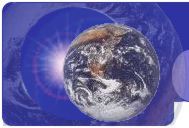Define - Bacteria in Drinking Water
Drinking Water Pathogens and Their Indicators: A
Reference Resource
Disinfection byproducts are formed when disinfectants used in a
water treatment react with bromide or natural organic matter
(i.e., decaying vegetation) present in the source water. Different
disinfectants produce different types and/or amounts of
disinfection byproducts. Regulations are currently being
implemented or are scheduled to be implemented for the following
disinfection byproducts: trihalomethanes, haloacetic acids,
bromate, and chlorite.
------------------------
Pathogens are microbes that cause disease. They include a
few types of bacteria, viruses, protozoa, and other organisms.
Some pathogens are often found in water, frequently as a result of
fecal matter from sewage discharges, leaking septic tanks, and
runoff from animal feedlots into bodies of water.
------------------------
Total Coliforms are a group of closely related, mostly
harmless bacteria that live in soil and water as well as the gut
of animals. The extent to which total coliforms are present in the
source water can indicate the general quality of that water and
the likelihood that the water is fecally contaminated. Total
coliforms are currently controlled in drinking water regulations
(i.e., Total Coliform Rule) because their presence above the
standard indicates problems in treatment or in the distribution
system. EPA requires all public water systems to monitor for total
coliforms in distribution systems. If total coliforms are found,
then the public water system must further analyze that total
coliform-positive sample to determine if specific types of
coliforms (i.e., fecal coliforms or E. coli) are present. EPA is increasing protection from
pathogens in surface water systems as part of the Interim Enhanced
Surface Water Treatment Rule, which becomes effective in December
2001. More information about E. coli
------------------------
Cryptosporidium is a single-celled microbe contained in a
group generally known as protozoa. Cryptosporidium may cause a
disease, cryptosporidiosis, when ingested. Cryptosporidiosis
symptoms can range from mild stomach upset to life threatening
disease in those who are immunocompromised (e.g., people with
severely compromised immune systems). Oocysts are a stage in the
life-cycle of some Cryptosporidium. In this stage, the
Cryptosporidium can infect humans and other animals. EPA regulates
Cryptosporidium in drinking water, through the new Interim
Enhanced Surface Water Treatment Rule, by requiring filtered
surface water systems serving at least 10,000 to physically remove
at least 99% of Cryptosporidium. Systems without filtration must
adopt a watershed control program to protect the source water from
Cryptosporidium contamination. This requirement becomes effective
in December 2001. The effectiveness of treatment technologies are
used to judge how well removal works since direct measurement of
pathogens in treated water is not feasible. Additional
Cryptosporidium information is also available from EPA's Office of
Ground Water and Drinking Water.
------------------------
Giardia lamblia (commonly referred to as Giardia) are
single-celled microbes contained in a group known as protozoa.
When ingested, they can cause a gastrointestinal disease called
giardiasis. Giardiasis is a frequent cause of diarrhea. Symptoms
may include diarrhea, fatigue, and cramps. Waterborne giardiasis
may occur as a result of disinfection problems or inadequate
filtration procedures. Cysts are a stage in the life-cycle of some
Giardia. In this stage, the Giardia can infect humans and other
animals. EPA regulates Giardia in drinking water by requiring
water systems that use surface water or ground water under the
direct influence of surface water to disinfect and/or filter their
water so that at least 99.9% of Giardia are rendered harmless or
physically removed. The effectiveness of treatment technologies
are used to judge how well removal works since direct measurement
of pathogens in treated water is not feasible.
------------------------
Protozoa are microscopic, usually single-celled microbes
which live in water and are relatively large in comparison to
other microbes. Protozoa eat bacteria, and many are parasitic.
------------------------
Viruses, including hepatitis A virus, rotaviruses, and
Norwalk and other caliciviruses, are microbes that can cause
illness. EPA regulates viruses in drinking water by requiring
water systems that use surface water (or ground water under the
direct influence of surface water) to treat their water to ensure
that 99.99% of viruses are rendered harmless or physically
removed.
------------------------
Oocysts (cysts) are a stage in the life-cycle of some
protozoa.
Cryptosporidium Information
Pathogen Information
Pathogen Health Effects
Drinking Water and Health
Learn about: at home
bacteria testing kits
|
